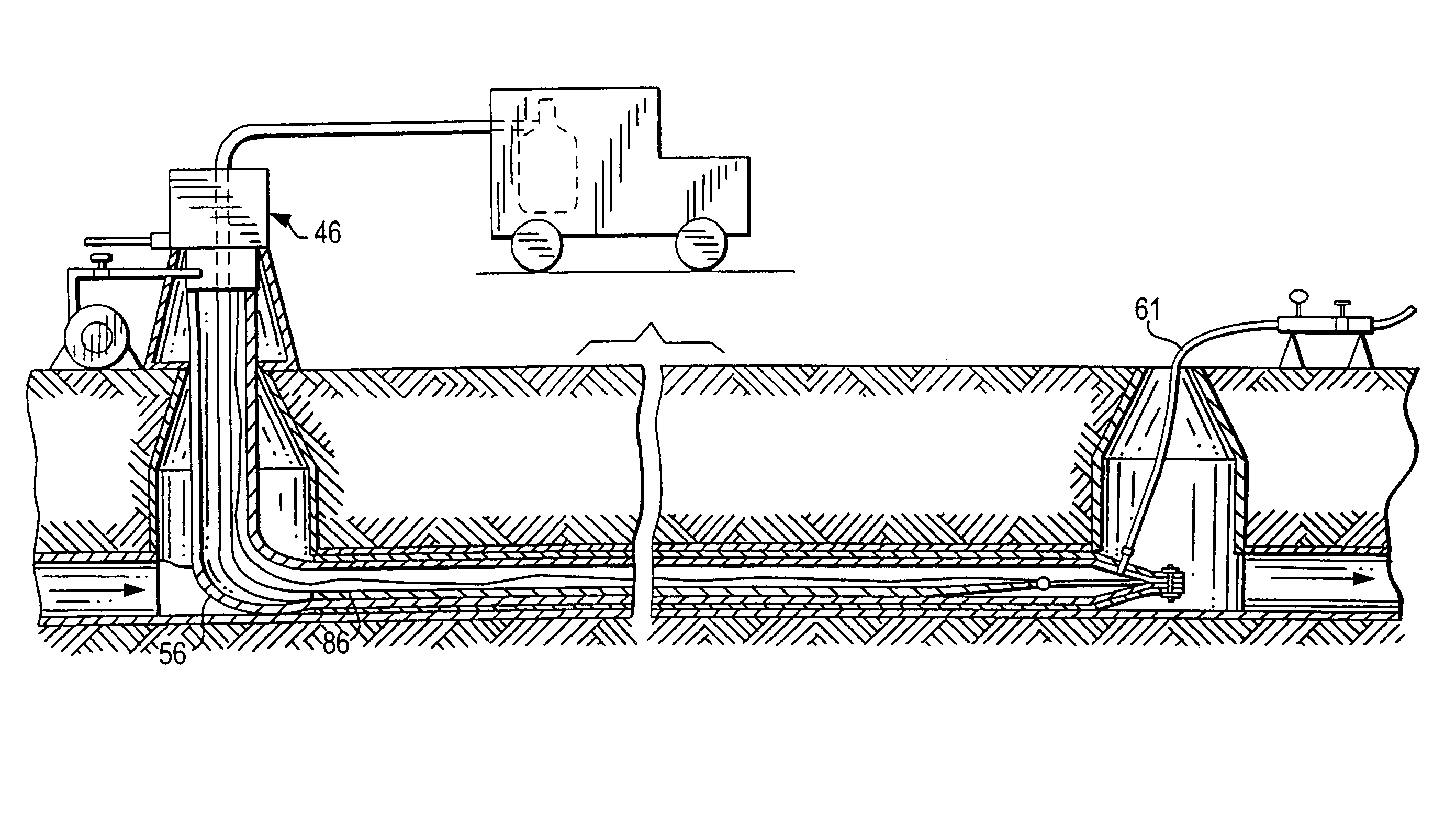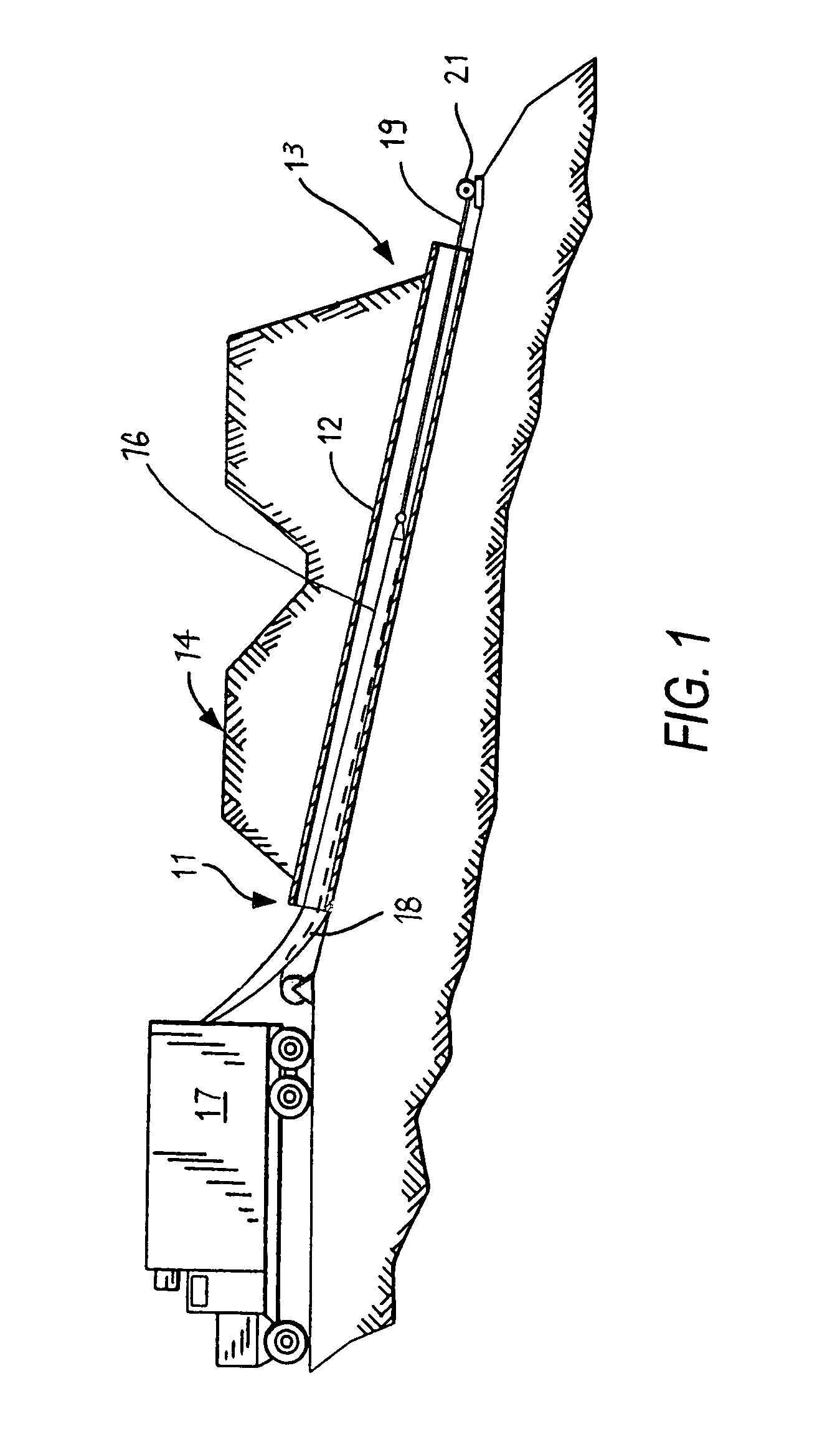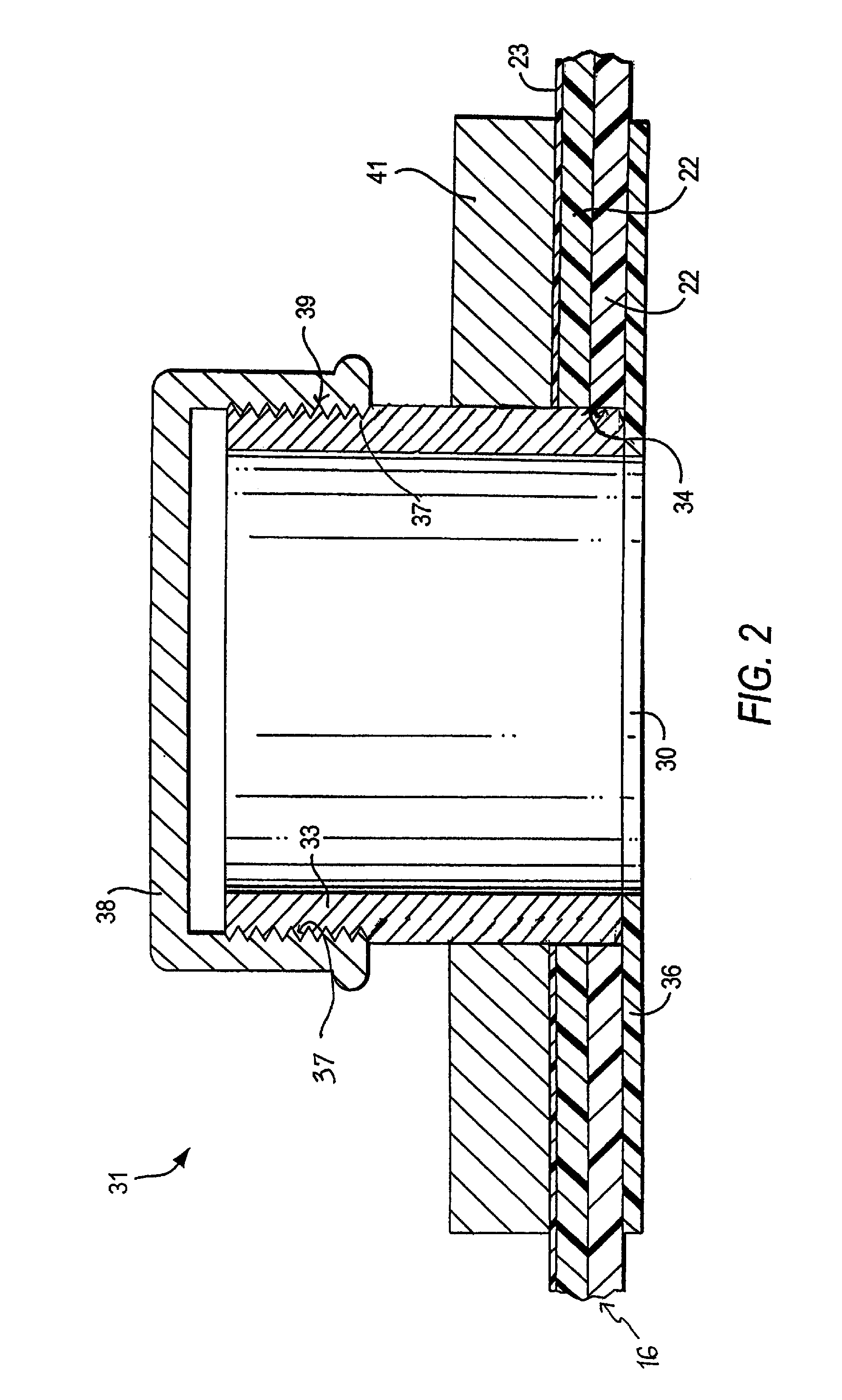Exhaust and/or condensate port for cured in place liners and installation methods and apparatus
a technology of exhaust and/or condensate port and installation method, which is applied in the direction of shaft equipment, hollow wall articles, other domestic objects, etc., can solve the problems of near the pipe joint, and the deterioration of the pipe itsel
- Summary
- Abstract
- Description
- Claims
- Application Information
AI Technical Summary
Benefits of technology
Problems solved by technology
Method used
Image
Examples
Embodiment Construction
[0054]FIG. 1 shows an upper end 11 of a typical highway culvert crossing 12 passing under a roadway with a lower end 13. A resin impregnated liner 16 is pulled in from the upper end by a winch at the lower end. Liner 16 stored in a refrigerated vehicle 17 is wrapped with a polypropylene sleeve 18 to prevent damage and control longitudinal stretch during pull-in from upper end 11 to lower end 13 by a rope 19 pulled by a winch 21 at lower end 13.
[0055]Liner 16 is a flexible cured in place liner is of the type generally well known in the art. It is formed from at least one layer of a flexible resin impregnable material 22, such as a felt layer having an outer impermeable polymer film layer 23. Felt layers 22 and film layer 23 are stitched along a seam line to form a tubular liner. A compatible thermoplastic film in a form of a tape or extruded material is placed on or extruded over the seam line in order to ensure the impermeability of the liner.
[0056]For larger liner diameters, severa...
PUM
| Property | Measurement | Unit |
|---|---|---|
| diameter | aaaaa | aaaaa |
| diameter | aaaaa | aaaaa |
| diameter | aaaaa | aaaaa |
Abstract
Description
Claims
Application Information
 Login to View More
Login to View More - R&D
- Intellectual Property
- Life Sciences
- Materials
- Tech Scout
- Unparalleled Data Quality
- Higher Quality Content
- 60% Fewer Hallucinations
Browse by: Latest US Patents, China's latest patents, Technical Efficacy Thesaurus, Application Domain, Technology Topic, Popular Technical Reports.
© 2025 PatSnap. All rights reserved.Legal|Privacy policy|Modern Slavery Act Transparency Statement|Sitemap|About US| Contact US: help@patsnap.com



